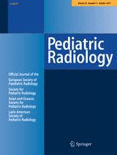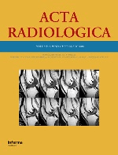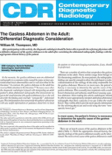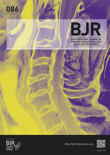
Acta Radiologica Open
Scope & Guideline
Unlocking the potential of radiology through accessible knowledge.
Introduction
Aims and Scopes
- Clinical Radiology:
The journal highlights original research and case reports that explore various clinical applications of imaging techniques, including CT, MRI, and ultrasound, particularly in the diagnosis and management of diseases. - Advanced Imaging Techniques:
There is a consistent focus on the development and evaluation of advanced imaging modalities and techniques, including dual-energy CT, diffusion-weighted imaging, and novel MRI protocols. - Interdisciplinary Approaches:
The journal promotes interdisciplinary research that integrates radiology with other medical specialties, showcasing the collaborative nature of modern healthcare and the role of imaging in diverse clinical scenarios. - Radiological Education and Guidelines:
Acta Radiologica Open also addresses educational aspects of radiology, including radiological reporting standards, diagnostic reference levels, and the impact of guidelines on practice. - Artificial Intelligence in Radiology:
The journal is increasingly incorporating studies that evaluate the application of artificial intelligence and machine learning in radiological practices, focusing on diagnostic accuracy and workflow optimization.
Trending and Emerging
- Radiomics and Quantitative Imaging:
An increasing number of studies are focusing on radiomics and quantitative imaging techniques, aiming to extract high-dimensional data from imaging studies to improve diagnostic accuracy and treatment planning. - Integration of Artificial Intelligence:
The application of artificial intelligence and machine learning algorithms in radiology is on the rise, with research exploring their potential to enhance diagnostic performance and streamline workflows. - Patient-Centered Imaging Practices:
There is a growing emphasis on patient-centered approaches in imaging, including research on communication of radiation dose and the impact of imaging on patient outcomes. - Novel Imaging Biomarkers:
Emerging themes include the identification and validation of novel imaging biomarkers for various diseases, particularly in the context of personalized medicine and targeted therapies. - Cross-Disciplinary Research:
The journal is increasingly publishing studies that cross traditional disciplinary boundaries, integrating insights from oncology, cardiology, and other specialties to enhance the role of radiology in comprehensive patient care.
Declining or Waning
- Basic Science Research in Radiology:
There has been a noticeable decrease in basic science studies related to radiology, as the journal shifts towards clinical applications and case studies that offer immediate relevance to practitioners. - Traditional Imaging Techniques:
Research centered on traditional imaging methods without significant innovation or integration of new technologies appears to be waning, as the focus has moved towards more advanced imaging techniques and their clinical implications. - Single-Center Studies:
The prevalence of single-institution studies is declining, with a growing trend towards multi-institutional collaborations that enhance the robustness and generalizability of research findings. - Radiology in Rare Diseases:
While still present, the focus on rare diseases in radiology is less prominent compared to broader studies addressing common conditions and prevalent health issues, reflecting a shift towards more widely applicable research.
Similar Journals

Iranian Journal of Radiology
Connecting Researchers for a Brighter Imaging FutureWelcome to the Iranian Journal of Radiology, a pivotal platform dedicated to advancing the field of radiology, nuclear medicine, and medical imaging. Published by BRIEFLAND, this journal aims to disseminate high-quality original research, reviews, and clinical studies that contribute substantially to the global scientific community. Established in 2008 and spanning until 2024, the journal provides an essential archive of knowledge in a rapidly evolving discipline. Although it currently holds a Q4 quartile ranking in the 2023 Scopus metrics, it serves as an important resource for both emerging and established researchers looking to submit their work. Located in the Netherlands, the journal is committed to open dialogue and collaboration amongst professionals in the field, reflecting its accessibility and relevance to both practitioners and academics. With its continued growth and commitment to quality, the Iranian Journal of Radiology is poised to enhance understanding and innovation in diagnostic imaging.

PEDIATRIC RADIOLOGY
Innovating diagnostics for the youngest patients.Pediatric Radiology is a leading journal published by Springer that provides a crucial platform for the dissemination of research in the fields of pediatrics, perinatology, and radiology. Since its inception in 1973, the journal has continually contributed to the advancement of medical imaging techniques and their application in diagnosing and treating pediatric conditions. With its impact factor reflecting a Q2 ranking in both Pediatrics and Radiology categories as of 2023, Pediatric Radiology is highly regarded in scholarly circles, aiding researchers, clinicians, and students to stay at the forefront of innovations and findings in the field. Although the journal does not offer open access, it continues to be an essential resource for evidence-based information that enhances clinical practice and improves health outcomes for children globally. The journal's reach is further established through its solid Scopus rankings, indicating its relevance and influence in the global medical community.

Abdominal Radiology
Advancing the Frontiers of Abdominal ImagingAbdominal Radiology is an esteemed journal published by Springer, focusing on the intricate and evolving field of abdominal imaging. With its ISSN 2366-004X and E-ISSN 2366-0058, this journal serves as a vital platform for disseminating high-quality research and clinical findings that advance both the understanding and practice of radiology specifically related to abdominal diseases. With a commendable impact, categorized in 2023 as Q2 in the fields of Gastroenterology, Radiological and Ultrasound Technology, and Radiology, Nuclear Medicine and Imaging, and Q1 in Urology, it attracts an audience eager for cutting-edge insights. Furthermore, its ranking in Scopus reflects its strong influence, with a notable position of #21 in Urology and #92 in Radiology. The journal adopts an Open Access model, facilitating a wider dissemination of knowledge and promoting collaborative research efforts on a global scale. The convergence of contributions from established researchers and emerging professionals alike enriches its content from 2016 to 2024, ensuring that readers remain at the forefront of abdominal diagnostics and therapeutic advancements.

ACTA RADIOLOGICA
Unveiling New Perspectives in Radiological AdvancementsACTA RADIOLOGICA, published by SAGE Publications Ltd, is a premier journal dedicated to the evolving field of radiology, bridging the gap between clinical practice and research from its inception in 1921 to its anticipated continuation until 2024. With an ISSN of 0284-1851 and an E-ISSN of 1600-0455, this esteemed journal holds a significant position in the academic landscape, reflected in its 2023 rankings as Q3 in several categories, including Medicine (miscellaneous), Radiological and Ultrasound Technology, and Radiology, Nuclear Medicine and Imaging. Although currently not an open-access journal, ACTA RADIOLOGICA offers robust subscription options allowing a wide readership among researchers, healthcare professionals, and students striving to stay at the forefront of radiological advancements. The journal publishes original research, reviews, and clinical studies that contribute to the understanding and application of imaging technologies, underscoring its vital role in shaping modern medical practices.

SA Journal of Radiology
Transforming Practice: Elevating Radiology Through Open AccessThe SA Journal of Radiology is a prominent open-access journal published by AOSIS, dedicated to advancing knowledge in the fields of Radiology and Ultrasound Technology. Established in 2004, this South African journal provides a platform for researchers, professionals, and students to disseminate valuable findings and share innovative practices in medical imaging. With an ISSN of 1027-202X and an E-ISSN of 2078-6778, the journal has become an important resource for those involved in radiological sciences, despite currently holding a Q4 ranking in both Radiological and Ultrasound Technology and Radiology, Nuclear Medicine and Imaging categories. Covering a converged time span from 2014 to 2024, the journal aims to promote scholarly communication and enhance the accessibility of research, positioning itself as a key player in the global radiological community. In a landscape where open access is increasingly critical, the SA Journal of Radiology is committed to fostering research collaboration and facilitating the exchange of ideas among clinicians and academics alike.

Contemporary Diagnostic Radiology
Unveiling New Horizons in Medical ImagingContemporary Diagnostic Radiology is a pivotal journal in the field of medical imaging and radiology, published by Lippincott Williams & Wilkins. With an ISSN of 0149-9009 and an E-ISSN of 1938-1395, this journal serves as an essential platform for disseminating high-quality research and advances in diagnostic radiology and related disciplines. While it is categorized in the lower quartiles (Q4) for its performance in the 2023 rankings in both Neurology, Radiology, Nuclear Medicine and Imaging, and Surgery, its focus on emerging technologies and methodologies in imaging continues to provide valuable insights for practitioners and researchers alike. The journal’s scope includes innovative diagnostic tools, imaging techniques, and case studies, fostering collaboration and knowledge sharing in the medical community. Although it does not offer open access options, its commitment to contributing to the ongoing dialogue in clinical imaging is undisputed, making it an essential resource for professionals seeking to stay abreast of current trends and research in the rapidly evolving landscape of diagnostic radiology.

BRITISH JOURNAL OF RADIOLOGY
Pioneering Research for the Future of ImagingBritish Journal of Radiology is a leading peer-reviewed journal published by the British Institute of Radiology, dedicated to advancing the field of radiology, nuclear medicine, and imaging. With a prestigious history dating back to 1945, this journal is at the forefront of disseminating cutting-edge research and innovations that significantly impact clinical practice. Currently enjoying a Q1 ranking in the field of radiology and Q2 in general medicine for 2023, it is recognized for its rigorous standards and high-quality content, ranking #87 out of 333 in Scopus for specialties related to Medicine, Radiology, Nuclear Medicine, and Imaging, placing it in the 74th percentile. Researchers, professionals, and students are encouraged to engage with the latest findings and comprehensive reviews presented within its pages, which contribute not only to academic discourse but also to the evolution of practice in the wider medical community.

Radiologie
Elevating Clinical Practice with Radiological InsightsRadiologie, published by SPRINGER HEIDELBERG, is an emerging journal dedicated to the fields of radiology, nuclear medicine, and imaging. With an ISSN of 2731-7048 and E-ISSN 2731-7056, this journal does not currently offer open access, providing a traditional yet respected platform for scholarly communication. Founded in 2022, it aims to advance the understanding of cutting-edge imaging techniques and their applications in clinical practice, contributing to improvements in diagnostic accuracy and patient care. Despite its recent establishment, Radiologie is positioned within the Q4 quartile category, reflecting its developing presence in the academic landscape, with a current Scopus rank of #231 out of 333 in its category. The journal serves as a vital resource for researchers, professionals, and students seeking to stay abreast of the latest developments in radiological science, imaging technology, and their clinical implications, ensuring ongoing engagement and advancement in this critical area of healthcare.

Current Radiology Reports
Elevating clinical practice through innovative radiology reports.Current Radiology Reports is an esteemed journal published by SPRINGERNATURE, focusing on the dynamic field of radiology, nuclear medicine, and imaging. With a commitment to advancing knowledge and promoting innovative practices, this journal serves as a valuable resource for researchers, healthcare professionals, and students striving to stay at the forefront of radiological advancements. Featuring an impressive impact factor and recognized as a Q3 journal within its category as of 2023, it highlights critical developments and comprehensive reviews that inform clinical practice and research methodologies. Although it operates under a subscription model, the journal provides a rich repository of peer-reviewed content, covering a wide range of topics from diagnostic imaging to therapeutic applications. With a publication span from 2013 to 2024, Current Radiology Reports continues to uphold its reputation as a leading publication critical for anyone involved in the radiology profession.

Oral Radiology
Advancing oral health through innovative imaging research.Oral Radiology is a prestigious academic journal published by Springer, dedicated to advancing the field of dentistry and radiology through high-quality research and innovative findings. With a focus on oral imaging, it has established itself as a vital resource for researchers, clinicians, and students alike, striving to bridge the gap between cutting-edge imaging technologies and practical applications in oral health. Covering a diverse range of topics from 1985 to 2024, this journal not only holds a commendable Q2 ranking in both the Dentistry (miscellaneous) and Radiology, Nuclear Medicine and Imaging categories but also ranks impressively within the Scopus metrics, placing it among the top-tier publications in its field. While not an open-access journal, Oral Radiology remains a crucial platform for disseminating significant advances, influencing both academic research and clinical practices. Its rigorous peer-review process ensures that only the highest quality articles are published, making it an essential read for those seeking to stay at the forefront of oral radiological science.